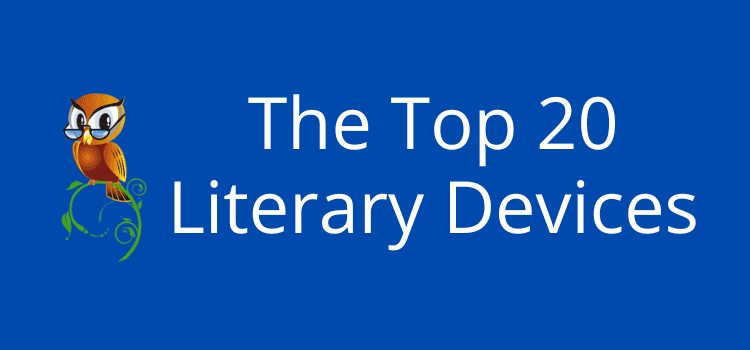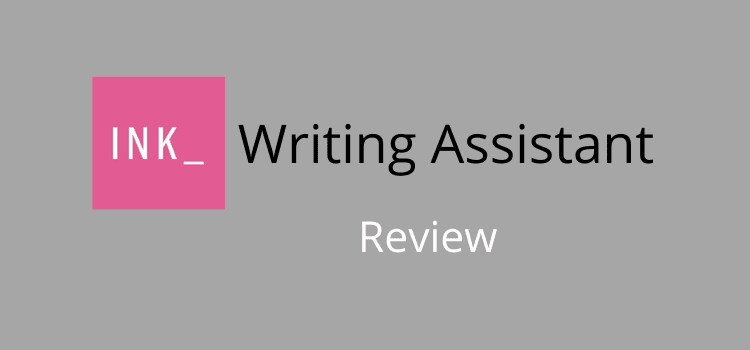
Literary devices are vital tools that all writers should learn to use to bring their writing and stories to life.
They can add depth, emotion, and subtle layers of meaning to even the simplest forms of writing, transforming words into vivid mental images.
When you understand and start using a few basic devices, you can engage your readers by creating memorable imagery and conveying complex ideas with a little bit of style.
Whether you’re writing a novel, a poem, an article, or an essay, trying and using some of these techniques can only improve your writing.
What are literary devices?
They are techniques writers use to improve the quality of their storytelling by creating memorable imagery and conveying deeper meanings in their work.
They are the building blocks of literature, helping shape how a story is told and how it affects readers.
These devices can take many forms, from the subtle use of symbolism to represent abstract ideas to the more overt use of metaphors to draw comparisons between different concepts.
Irony adds a layer of complexity by highlighting contrasts between appearance and reality while foreshadowing hints at events to come, creating some suspense and anticipation.
Literary devices are not just abstract literary terms.
They are vital to writing, guiding how readers perceive and interpret a text.
Whether you use them to evoke emotion, emphasize a theme, or add rhythm to prose, these tools are essential for effective communication in literature.
You can choose from a wide array of devices to suit your style or purpose, making your writing more engaging and impactful.
Learning to use these devices will help you engage and retain your readers.
In essence, literary devices are the means of breathing life into your words, transforming simple text into powerful and memorable narratives.
Learning the basics
For new or inexperienced writers, learning to use literary devices can seem daunting at first. But starting with a few simple ones can make a significant difference to your writing.
Perhaps begin with similes and metaphors. These powerful tools can help you draw comparisons and create vivid ideas.
Practice these by describing everyday objects or feelings and comparing them to something else in an unexpected yet relatable way.
Alliteration is another simple device to experiment with, as is the rule of three.
It adds a musical quality to your writing by repeating the first letter of words, making your sentences more memorable.
Imagery is crucial for bringing your scenes to life.
When describing a setting or a moment, focus on the five senses of sight, sound, smell, taste, and touch.
This technique pulls readers into your world, making your story more realistic and relatable.
Foreshadowing is a subtle but effective device for adding depth.
Try hinting at future events without giving too much away, which can build suspense and keep readers hooked.
You can start experimenting by using a few devices in short pieces, like a short story or poetry, which you can try quite easily.
As you become more comfortable, gradually introduce other devices like irony or personification to add a little more complexity to your writing.
Remember, the key is to use these tools for a reason, not just for the sake of it.
Over time, you’ll learn when and how to apply them to improve your storytelling and make your writing more engaging.
My top 20 literary devices

I could have made this a very long list because there are a lot of devices and literary terms.
But I have narrowed it down to what I believe are the essential ones writers should learn how to use.
You won’t suddenly use all of them at once. However, with a bit of time and practice, most are relatively easy to grasp and use.
I have added two examples for each device to help you understand how they work.
1. Metaphor
A figure of speech that makes a direct comparison between two unrelated things by stating that one is the other to highlight a shared quality.
Her voice was music to his ears.
The world is a stage, and we are merely players.
2. Simile
It is similar to a metaphor but uses like or as to compare two different things.
The night was as black as coal.
His temper was like a storm, brewing and unpredictable.
3. Alliteration
The intentional repetition of the same sound at the beginning of closely connected words is often used to create rhythm or mood.
Alluring alliteration always adds awesome appeal.
The wild wind whipped through the willows.
4. Foreshadowing
This technique hints at what will come later in the story, creating suspense or preparing the reader for future events.
The old man’s ominous words lingered in her mind, hinting at the danger ahead.
As they entered the dark forest, the sudden silence hinted that something wasn’t right.
5. Irony
A device where the intended meaning is opposite to the literal sense. It’s often used to create humor or emphasize a point.
The doctor’s clinic had a sign that read, closed due to illness.
He posted a video on Facebook explaining how pointless and annoying social media is.
6. Personification
Assigning human characteristics to non-human objects, animals, or abstract ideas to create vivid imagery.
The flowers danced in the gentle breeze.
Time crawled at a snail’s pace during the long meeting.
7. Hyperbole
An exaggerated statement is not meant to be taken literally; it is used for emphasis or comedic effect.
I’ve told you a million times to clean your room!
He’s so hungry he could eat a horse.
8. Imagery
It is using descriptive language that appeals to the senses (sight, sound, smell, touch, taste) to create vivid mental pictures.
The golden sunset spilled across the horizon, painting the sky with shades of pink and orange.
The aroma of freshly baked bread filled the room, making it warm and inviting.
9. Onomatopoeia
A word (usually a verb) that imitates the sound it represents is often used to make writing more dynamic and engaging.
The bees buzzed busily among the flowers.
The door creaked open, sending a shiver down her spine.
10. Allusion
A brief and indirect reference to a person, place, event, or piece of art to add depth or context.
He’s a real Romeo with the ladies.”* (Reference to Romeo from Shakespeare’s *Romeo and Juliet*)
The software update was her Achilles heel. (Reference to the mythological Achilles)
11. Symbolism
The use of symbols—objects, characters, or colors—to represent abstract ideas or concepts.
A dove flew overhead, a sign of a wish for peace in the war-torn land.
The broken mirror in the story signifies the protagonist’s shattered identity.
12. Oxymoron
A figure of speech that combines contradictory terms to create a paradoxical effect.
The comedian’s jokes were seriously funny.
She gazed at him with an icy warmth in her eyes.
13. Juxtaposition
It places two or more contrasting elements close together to highlight their differences and create a more complex meaning.
The calm before the storm was eerie and unsettling.
The bright, colorful flowers grew amidst the ruins of the old building.
14. Flashback
A literary device to present events that occurred before the story’s current timeline, providing background or context.
As she walked through the old neighborhood, she had a vision of her childhood days spent playing in the park.
The soldier remembered his first day of training as he prepared for battle.
15. Allegory
A narrative in which characters and events represent broader concepts to convey moral, social, or political messages.
In George Orwell’s Animal Farm, the farm animals represent different classes in society.
The tortoise and the hare in Aesop’s fable represent the virtues of persistence versus arrogance.
16. Motif
A recurring element (such as an image, theme, or symbol) in a story that helps to develop the overall theme or mood.
The recurring mention of darkness in the novel emphasizes the feeling of despair.
The use of hands symbolizes both connection and separation.
17. Euphemism
A polite or mild word or expression refers to something more blunt or harsh, often to avoid offending or soften the impact.
She said her grandfather had passed away instead of died.
They were let go from their jobs instead of being fired.
18. Paradox
A statement that appears self-contradictory but reveals a more profound truth. You see this used often in epigrams.
This is the beginning of the end.
To bring peace, we must prepare for war.
19. Tone
The author’s attitude or approach to the subject matter is conveyed through word choice, style, and viewpoint.
The author was bitter and sarcastic, highlighting his disillusionment with society.
Her warm and inviting writing made the reader feel at home in the story.
20. Theme
The underlying message, central idea, or insight into life that a literary work explores, often through the story’s characters, plot, and setting.
The forces of good, represented by Harry Potter and his allies, and the forces of evil, embodied by Voldemort.
The Great Gatsby critiques the idea of the American Dream, showing how the pursuit of wealth and status can lead to moral decay, emptiness, and the destruction of personal relationships.
Summary
Literary devices are the secret sauce that can change your writing from good to memorable.
I’ve noted what I believe are the top 20 literary devices that every writer should have in their toolkit.
From the simple power of a metaphor or simile to the richness of juxtaposition and plain fun of an allegory, these tools help you add depth, emotion, and meaning to your writing.
Understanding these devices can make your writing more engaging and impactful, whether you’re just starting out or looking to polish your work.
So, give them a try, experiment, and see how your words come to life on a page.
Related Reading: Learn From Writers – The Easy Way To Improve Your Writing
Share This Article


